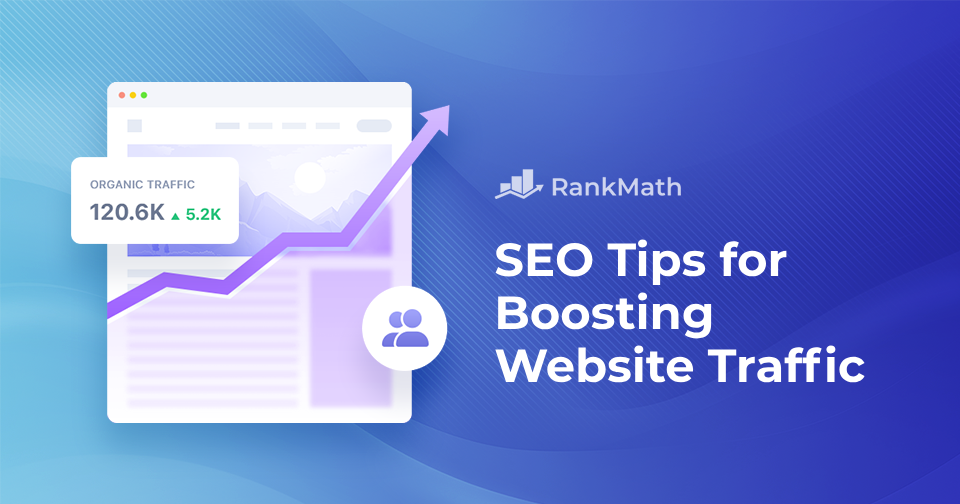With billions of searches happening every day, Search Engine Optimization (SEO) has become one of the most powerful tools for driving organic traffic to your site.
But with Google’s algorithms constantly evolving and competition increasing, it’s not enough to just cover the basics — you need strategies that actually move the needle.
In this post, we’ll discuss the essential SEO tips that’ll help you boost your website’s traffic and search engine rankings significantly.

From optimizing your content and website structure to leveraging the power of keywords and backlinks, each SEO tip will help you maximize your online presence and reach your target audience effectively.
So, without any further ado, let’s get started.
Best SEO Tips to Boost Your Website Rankings
- Assess Your Abilities
- Topic Research
- Analyze Your Competition
- Target Relevant Keywords
- Demonstrate E-E-A-T
- Write High-Quality Content
- Use the Focus Keyword in the First Sentence
- Write Textbook Style Answers
- Use H2 & H3 Heading Tags for the Main Content
- Optimize Your Content for Featured Snippet
- Boost CTR With Compelling Title Tags and Meta Descriptions
- Optimize Images and Other Visual Elements
- Add Internal Links
- Use Rank Math’s SEO Analysis Tool
- Add Table of Contents
- Optimize URL Structure
- Use Schema Markup
- Update Old Pages
- Remove Zombie Pages
- Get Backlinks From High-Authority Sites
- Submit an XML Sitemap
- Fix Broken Links
- Speed Up Your Website
- Monitor and Improve Core Web Vitals
- Improve Your CTR
Let us now discuss the top SEO tips to boost your website rankings.
1 Assess Your Abilities
When launching a new website, organizing your content effectively is key, and that starts with choosing the right structure based on your niche and target audience.
For example, if you’re building a sports news site, you might want to cover multiple topics like football, basketball, tennis, cricket, and more. But trying to tackle all of them at once can quickly become overwhelming.
More importantly, spreading your content too thin can confuse search engines. If you publish just one article in each of ten different categories, Google may struggle to understand what your site is really about. That can hurt your visibility.
A smarter approach is to start with one or two categories and publish multiple articles in each. This focused content strategy helps Google recognize your site’s topical relevance and improves your chances of ranking.
Setting up categories in WordPress helps organize your content and communicates your focus to search engines. To do this, navigate to your WordPress dashboard, click on Posts, and then select Categories. Here, you can add specific categories like Tennis or Basketball based on your chosen focus.
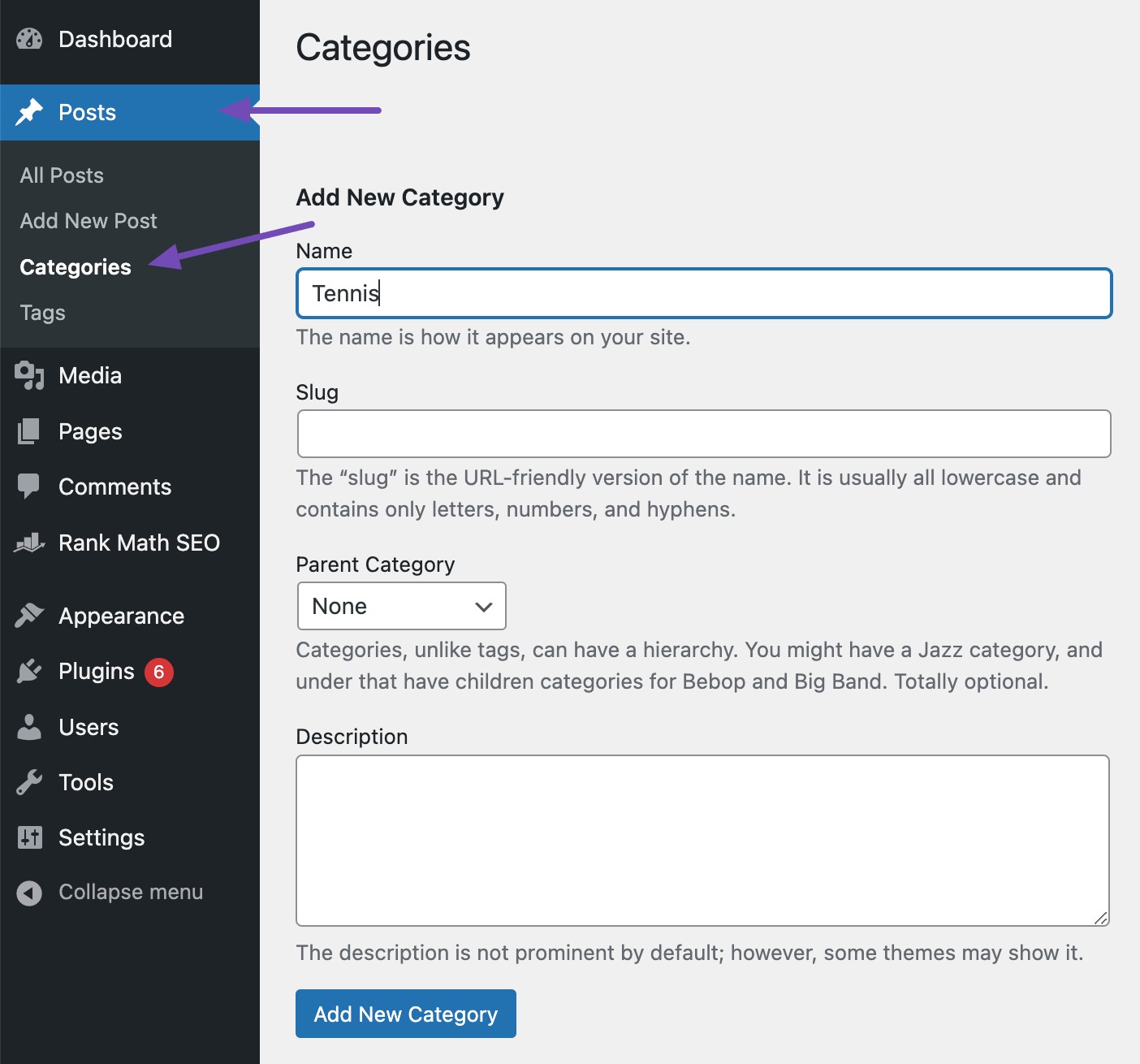
After setting up categories, ensure you add enough content to each one. For a new site, aim to have at least ten articles in one category before moving on to another. This gives Google enough information to evaluate your website and understand its purpose.
2 Topic Research
The second SEO tip is about effective topic research.
Focus on finding topics relevant to your business goals and the categories you created.
Avoid spending time on topics audiences aren’t searching for—it’s a waste of effort.
Use tools like Google Trends, Keyword Planner, Ubersuggest, or Keyword Generator to identify topics with search volume.
However, remember that tools like Ahrefs, Semrush, and Ubersuggest may not always provide accurate data for low to medium-volume keywords (e.g., under 500 searches per month). A keyword might show as having no search volume, but that doesn’t mean it’s not worth exploring further.
You can also use Rank Math’s Topic Research AI tool to identify topics at ease. To use this tool, navigate to Rank Math SEO → Content AI → AI Tools and select Topic Research tool, as shown below.
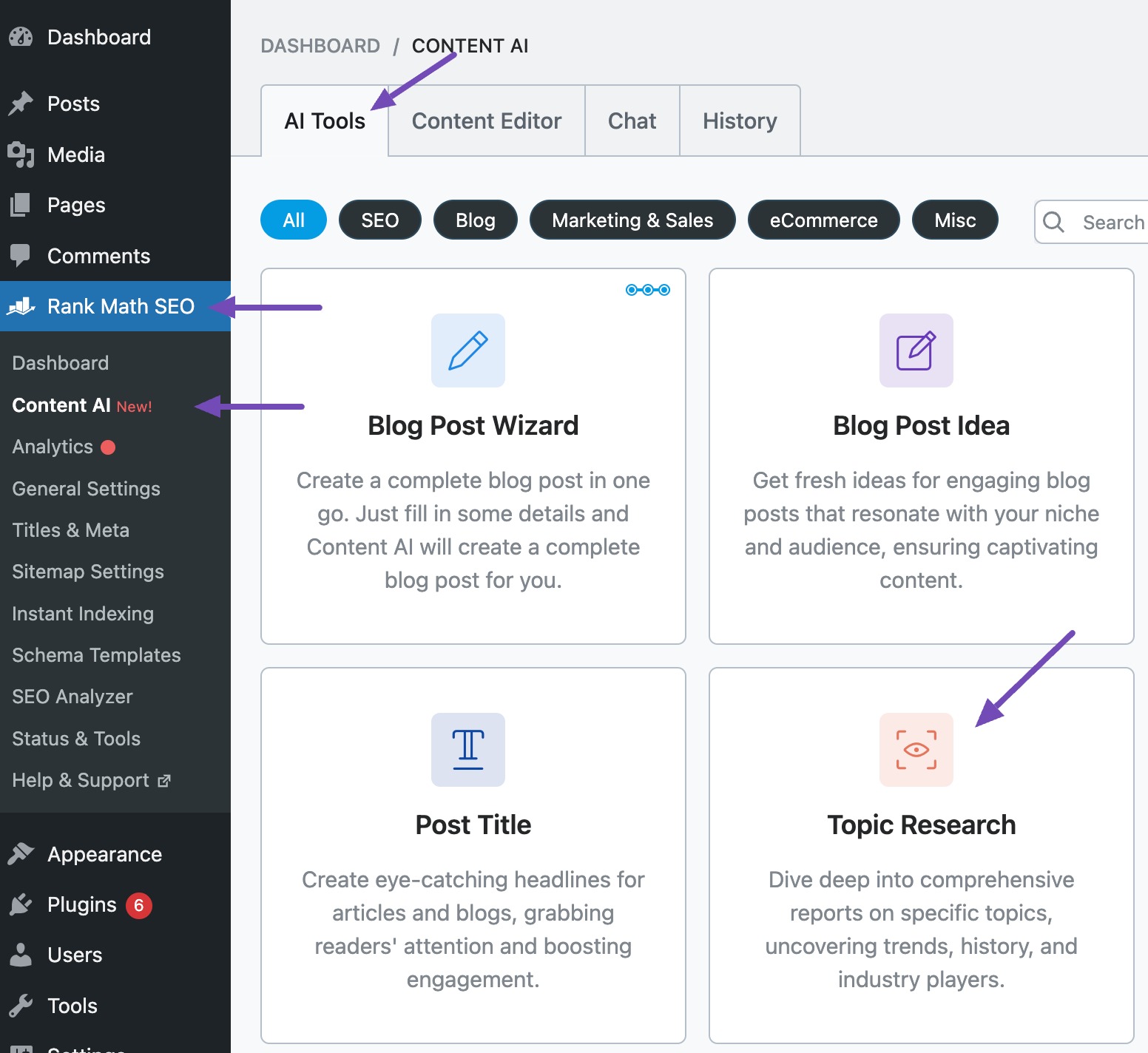
By entering a seed keyword or topic, the tool generates a list of topic suggestions that align with search intent and audience interests.
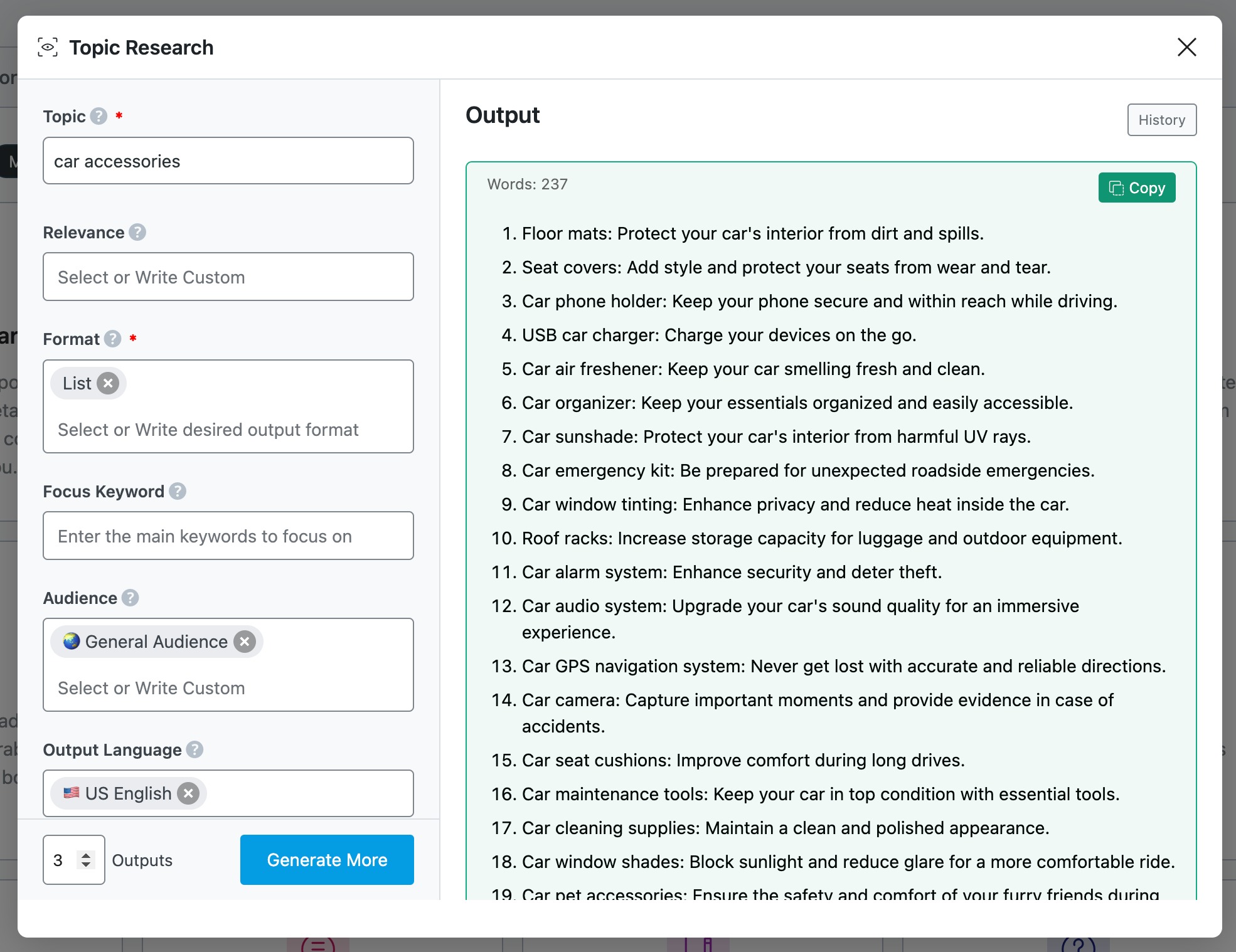
3 Analyze Your Competition
Once you’ve identified potential topics, the next step is to analyze your competition.
Start by entering your target keywords into Google and examining the top results.

If government websites or well-established authority sites dominate the first page, it’s a sign that the keyword is highly competitive. For a new website, going after these terms too early can lead to frustration with little return.
Instead, look for opportunities where the search results include a mix of high-authority domains and lesser-known websites. If smaller or niche sites are ranking well, it indicates lower competition and a better chance for your content to break through.
Also, pay attention to results that include forums like Quora or Reddit. When these show up in the top 10, it usually means the keyword space isn’t saturated with high-quality content, making it a great opportunity for you to step in and provide more value.
By targeting less competitive keywords early on, you’ll build momentum and authority faster, setting the stage for tackling more challenging topics later.
4 Target Relevant Keywords
Targeting the right keywords is a core part of SEO. To drive relevant traffic, your website needs to show up when people search for terms related to your content or business.
Start by conducting thorough keyword research using tools like Google Keyword Planner, Semrush, or Ahrefs. Focus on finding terms that align with what your audience is actually searching for, not just what you think they might search.
Rank Math Pro makes this even easier with its Search Intent feature. The Show Intent label beside your primary keyword — whether it’s informational, transactional, or navigational — helps you optimize content accordingly.
If you want to check the intent of another keyword, drag the other keyword to the first position to check its intent.
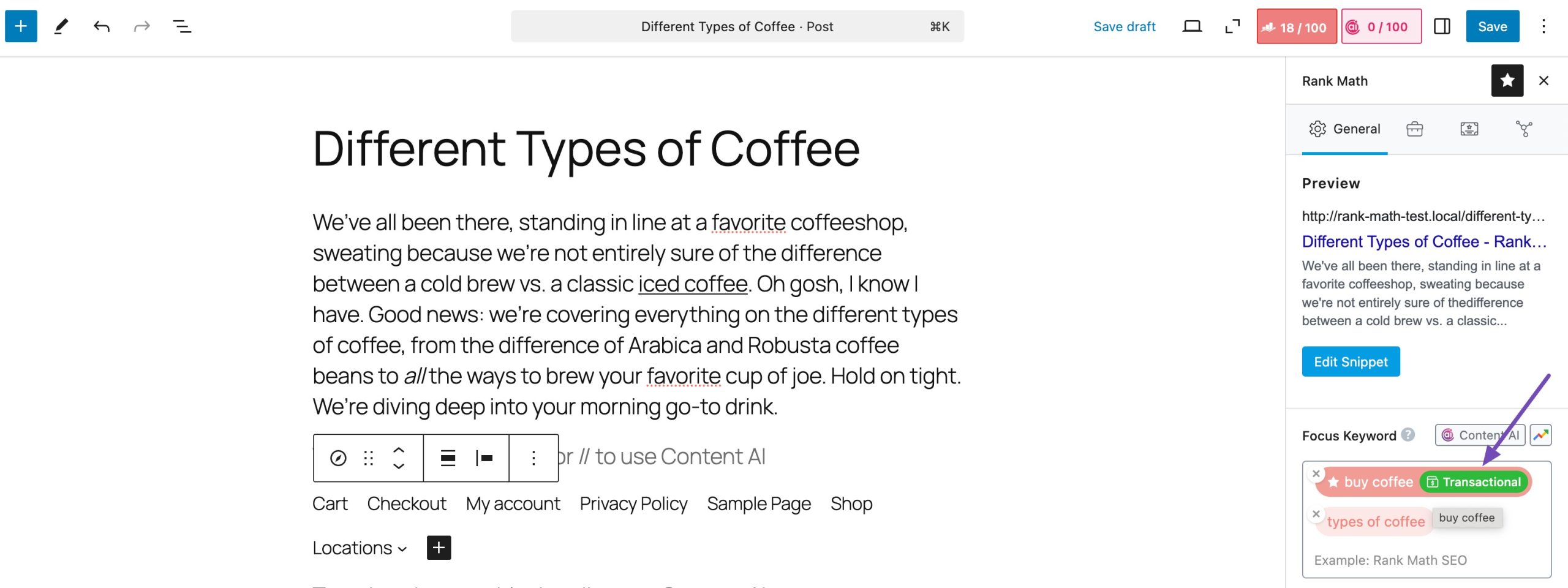
Once you’ve identified your target keywords, integrate them naturally into key areas of your content, such as titles, headings, meta descriptions, and body text. But be careful not to overdo it. Keyword stuffing can make your content feel unnatural and may even lead to search engine penalties.
Don’t forget to include long-tail keywords — more specific phrases that usually face less competition. For example, instead of a broad term like “dog grooming,” you might target “how to groom a golden retriever at home” or “organic pet grooming products.” These keywords often bring in highly targeted visitors.
Finally, aim for a healthy mix of content types. It’s tempting to focus only on buyer-intent keywords like “Product A Review” or “Best [Product] of [Year],” but relying solely on commercial content can limit your site’s reach. Google’s algorithm favors websites that offer a balance of both informational and transactional content.
5 Demonstrate E-E-A-T
Demonstrating E-E-A-T (Experience, Expertise, Authoritativeness, and Trustworthiness) is essential for building credibility and improving SEO.

Google places increasing importance on these signals to determine the quality of content and the reputation of its creators.
- Trustworthiness ensures that users and search engines view your content as reliable. This includes having clear contact information, HTTPS security, privacy policies, and genuine customer reviews.
- Experience reflects real-world, first-hand knowledge of a topic. Sharing personal stories, case studies, or practical walkthroughs shows your audience (and search engines) that you’ve actually lived what you’re talking about.
- Expertise is about the depth of your knowledge. This can be demonstrated through well-researched content, formal credentials, or industry experience.
- Authoritativeness signals that others recognize you as a credible voice in your field. Backlinks from reputable websites, guest posts on known platforms, or mentions from thought leaders can all support this.
For instance, a health blog authored by a licensed doctor, with links from medical institutions and positive reviews, would score high on E-E-A-T, boosting its search engine rankings.
Refer to our dedicated tutorial on E-E-A-T optimization and boost your website’s E-E-A-T signals.
6 Write High-Quality Content
Creating high-quality content is one of the most effective ways to attract and retain visitors, earn backlinks, and establish your website as a trusted source in your niche.
But what exactly makes content “high-quality”?
At its core, it should be informative, relevant, and valuable to your target audience. Go beyond surface-level tips and offer unique insights, data-backed advice, or personal experience that your competitors haven’t covered.
For example, if you run a fitness blog, don’t just list weight loss tips. Instead, create an in-depth guide on “Effective Strategies for Weight Loss,” packed with evidence-based advice, meal plans, custom workout routines, and real-life success stories. This level of detail not only helps your readers but also improves your chances of ranking well.
To increase engagement and readability:
- Use clear headings and subheadings
- Break up long blocks of text with bullet points and visuals
- Ensure your content is well-structured and easy to scan
And here’s something worth noting: With the help of AI, 47% of users are producing content faster, and 35% are shifting their focus from quantity to quality.
You can do the same using Rank Math’s Content AI to generate high-quality and optimized content for your audience and search engines.
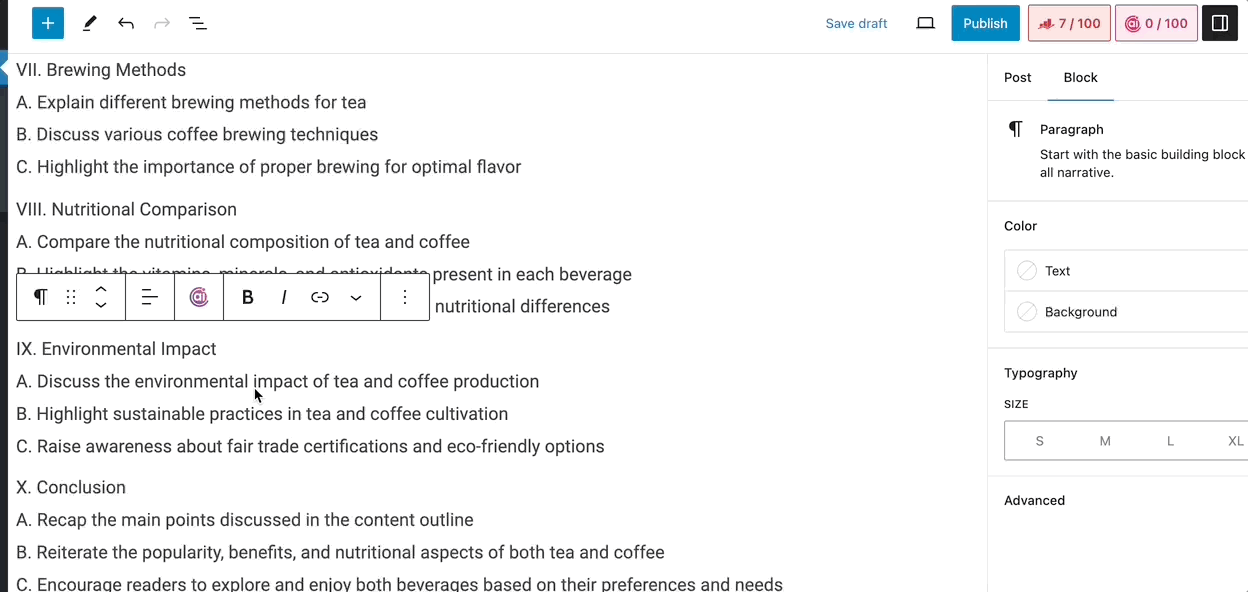
7 Use the Focus Keyword in the First Sentence
Using your focus keyword in the first sentence of your content is a smart SEO strategy that helps both search engines and readers immediately understand the main topic of your content.
Search engine algorithms often prioritize content that is clear and relevant to the user’s search query.
By including the focus keyword early in your post, you signal its importance and align your content with user intent.
For instance, if your focus keyword is the ‘best SEO tools,’ start with a sentence like, ‘Finding the best SEO tools can make a significant difference in optimizing your website and improving rankings.’

This not only helps with search engine visibility but also grabs the reader’s attention by addressing their query right away.
Keeping your first sentence concise, relevant, and naturally integrated with the keyword can improve your chances of ranking higher on search engine results pages.
8 Write Textbook Style Answers
Writing textbook-style answers is a great way to educate your audience while improving your content’s SEO performance.
This approach focuses on creating clear, structured, and easy-to-understand explanations that fully address the reader’s question. Effective textbook-style content typically includes:
- Simple definitions
- Step-by-step breakdowns
- Real-world examples
Search engines tend to favor this kind of content because it provides direct, helpful answers, often aligning perfectly with user intent. It also allows for natural keyword inclusion without sounding forced.
To keep your content original and valuable, avoid simply rewording what’s already out there. Instead, bring in your own voice, personal experience, or unique case studies to offer a fresh perspective on the topic.
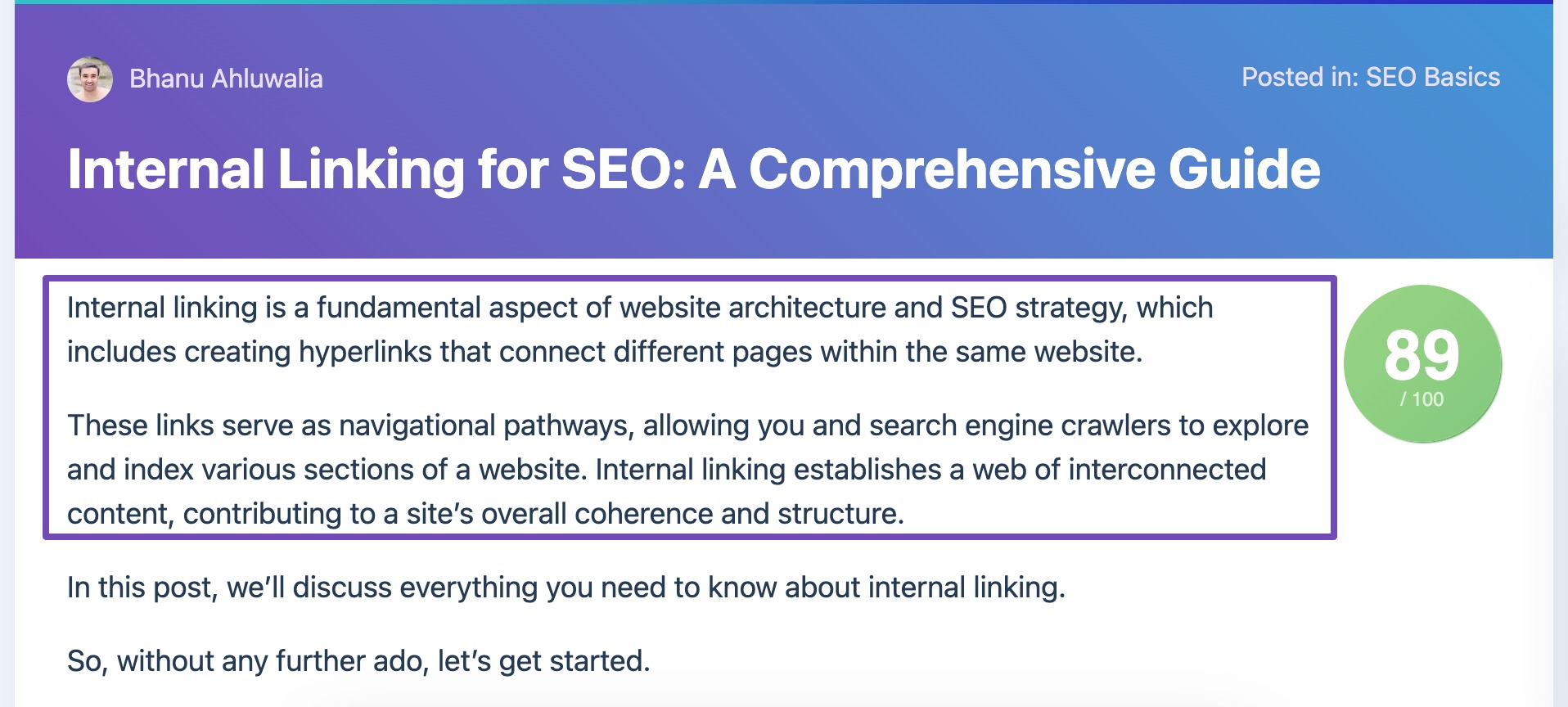
9 Use H2 & H3 Heading Tags for the Main Content
Using H2 and H3 tags in your main content is essential for both user experience and SEO.

An H2 tag typically represents primary subsections of your content. For instance, if your blog is about ‘SEO Best Practices,’ an H2 can be ‘Importance of Keyword Research’ or ‘How to Optimize Meta Tags’.
An H3 tag is used for subpoints or supporting information under an H2 heading. For instance, under the H2 ‘Importance of Keyword Research,’ you can use h3 tags like ‘Common Keyword Research Mistakes.’
This creates a layered, logical flow that makes the content easy to scan.
10 Optimize Your Content for Featured Snippets
Featured snippets are concise answers displayed prominently at the top of search results, providing the audience with quick, relevant information extracted from web pages.
To increase your chances of landing a featured snippet, format your content for clarity and structure. Use concise paragraphs, bullet points, numbered lists, and direct answers to common questions. Make sure the information is easy for search engines to extract and understand.

By optimizing your content to meet the criteria for featured snippets, you not only improve your snippet eligibility but also make your content more helpful for readers — a win-win for SEO and user experience.
11 Boost CTR With Compelling Title Tags and Meta Descriptions
Title tags and meta descriptions serve as the first impression of your website to your audience, influencing their decision to click through to your content.
Your title tag is the clickable headline that appears in search results, summarizing the content of your webpage.
Meta descriptions provide a brief summary of your webpage’s content beneath the title tag in search results. Here’s how it appears on Google.

Below are some of the best SEO tips to consider when creating title tags and meta descriptions:
- Incorporate your primary keyword into both the title tag and meta description.
- Keep your title tags between 50-60 characters and meta descriptions between 150-160 characters to ensure they display properly in search results.
- Consider formatting your title tag as a question, list, or how-to guide to attract attention.
- Ensure your meta description summarizes the page’s primary benefit or value proposition.
- Continuously test and refine your title tags and meta descriptions to improve effectiveness.
12 Optimize Images and Other Visual Elements
Optimizing images and other visual elements on your site does more than improve aesthetics — it enhances user experience and boosts your SEO performance.
Start by choosing the right file format. For most web content, WebP or JPEG offers a great balance of quality and file size. Then, compress images to reduce load time without sacrificing clarity. Tools like Imagify help you achieve this efficiently.
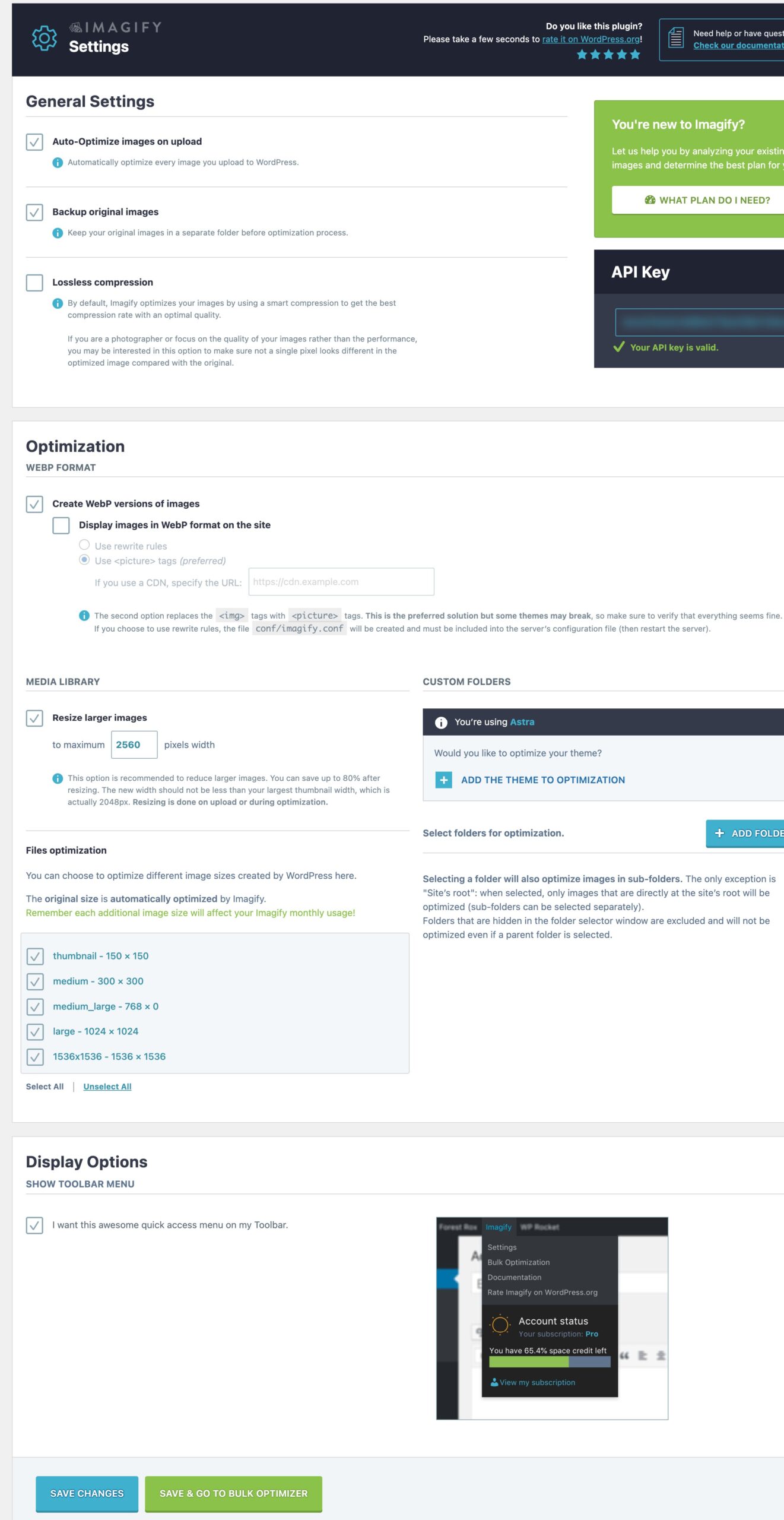
Slow-loading images can hurt both your SEO rankings and user engagement, especially on mobile devices.
Avoid generic filenames like “image001.jpg” and instead use descriptive phrases that include relevant keywords. This not only improves SEO but also helps search engines understand the context of the image.
Include descriptive alt text (alternative text) for all images to provide context and improve accessibility. Also, ensure that images and visual elements are responsive and adapt to different screen sizes and devices.
You can also use our Content AI to generate alt text for your images in WordPress. When you upload an image to your Media Library, simply click the Generate Alt button next to the Alt Text field, and the AI will generate an alt text for you, as shown below.
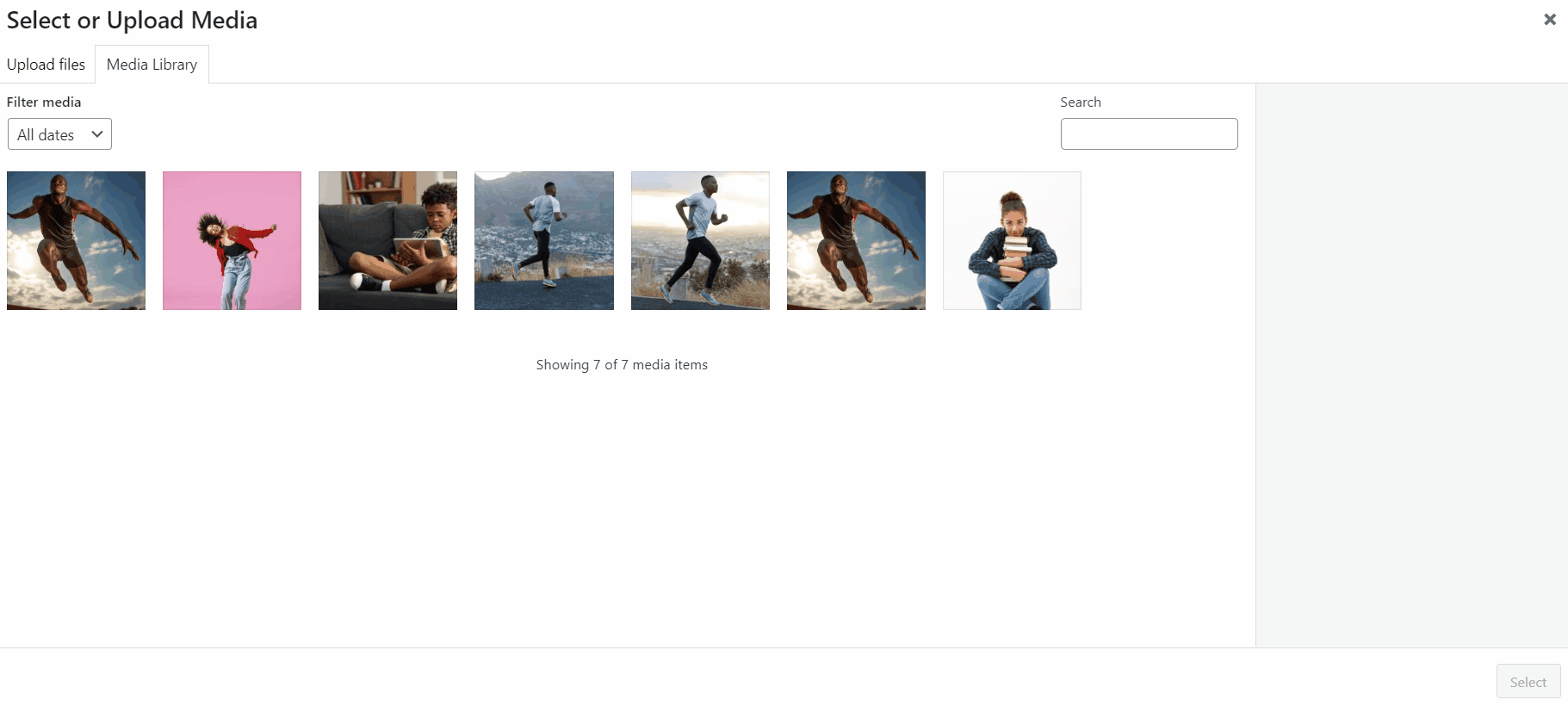
13 Add Internal Links
Adding internal links is a key SEO tip that improves site navigation, user experience, and search engine rankings.
For search engines, internal links make it easier to crawl and index your site while distributing link equity across pages, boosting rankings.
In Rank Math, you can use the Pillar Content feature to build contextual internal links to your pages/posts.
To do so, mark any post you want to build links to as a Pillar Post in the SEO meta box. To do so, edit your post, head over to the General tab of Rank Math SEO, and then click on This post is Pillar Content as shown below.
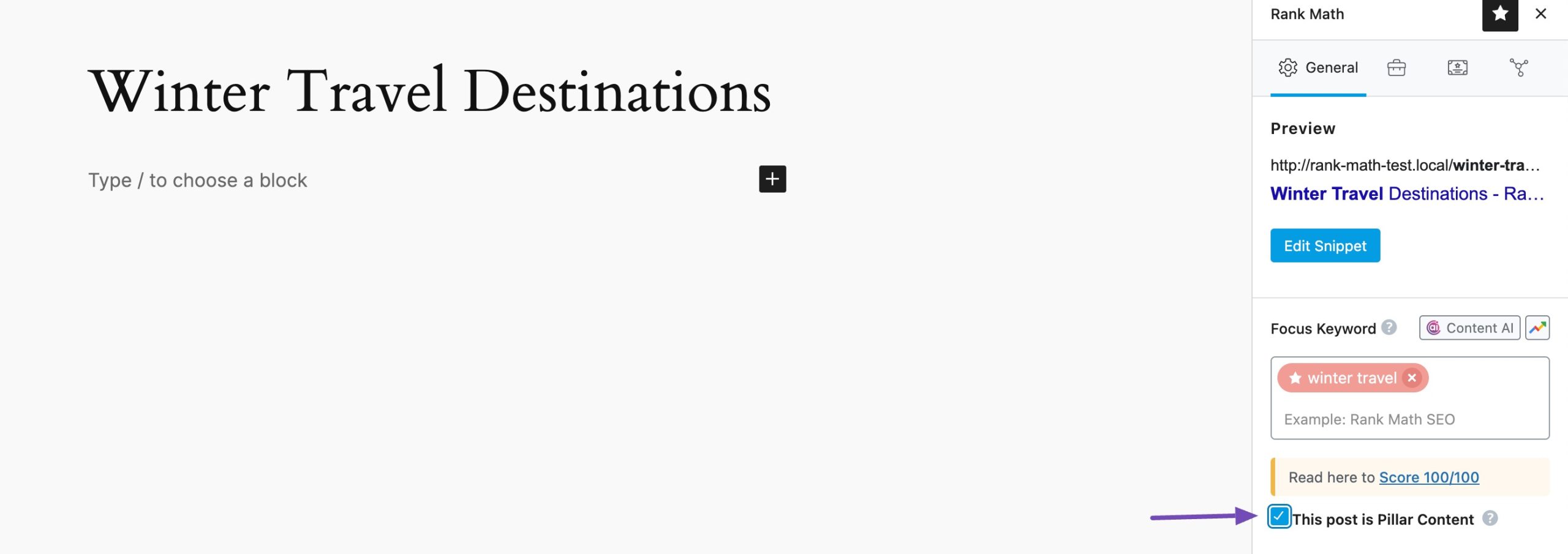
Ensure that internal links are relevant and placed naturally within the content.
14 Use Rank Math’s SEO Analysis Tool
At Rank Math, we’ve simplified optimizing your SEO articles to be incredibly simple. Our tool provides comprehensive best practices and recommendations to ensure your content aligns with current SEO standards.
First, we offer basic SEO checks to ensure your focus keyword appears in improvement areas, such as the title, meta description, and URL, while also verifying that your content meets the recommended length.
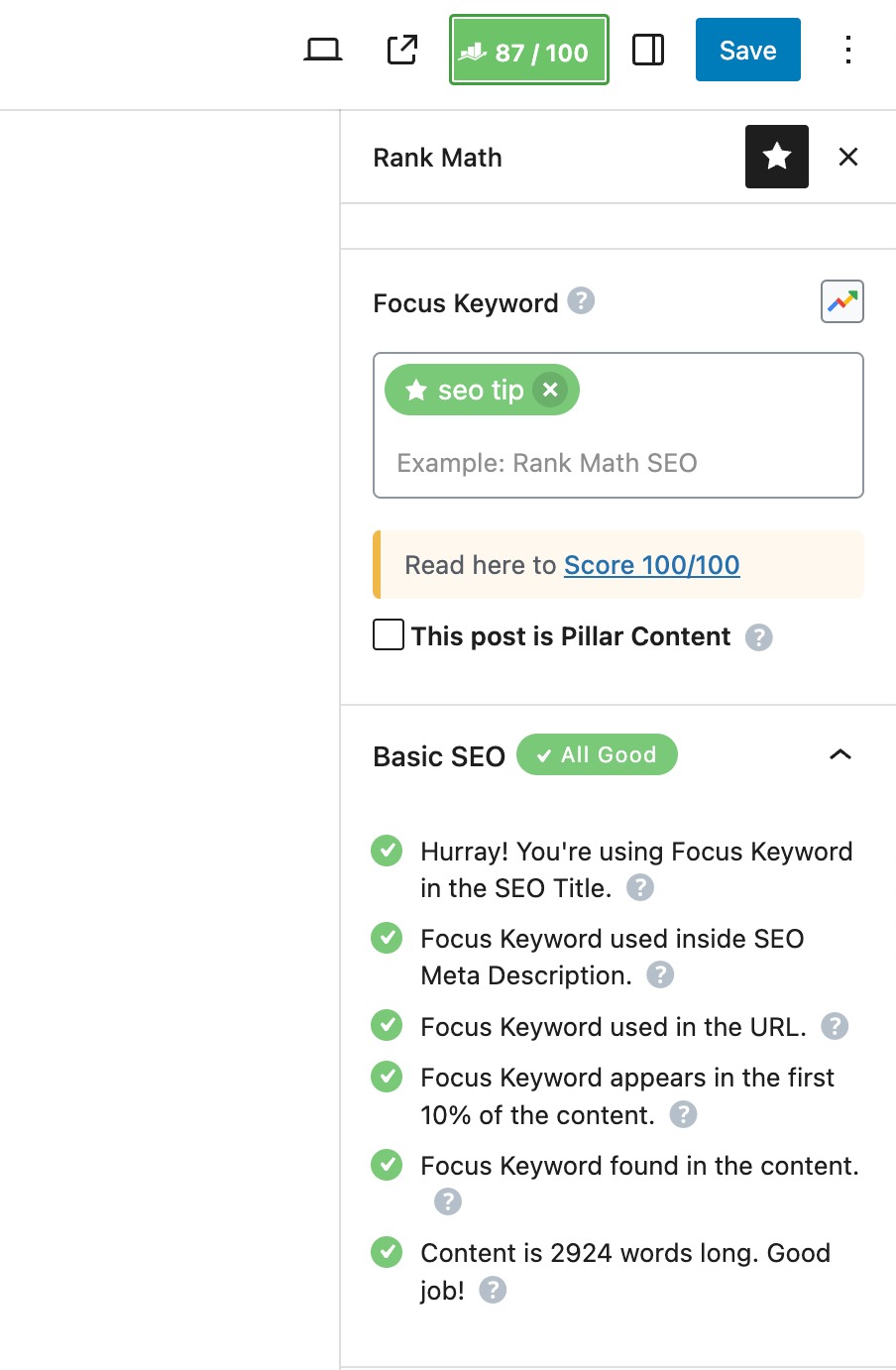
Next, we provide advanced recommendations to refine your optimization further. These include ensuring the focus keyword is in the image alt text, evaluating the URL’s length, checking for internal and external links, and assessing the readability of your title and content.

As you can see, the SEO analysis is thorough and continually updated to reflect the latest SEO guidelines. Aim to turn as many recommendations as possible green and strive for an overall SEO score above 80. This score serves as a strong indicator that your content is SEO-ready.
However, it’s essential to note that these are best practices, not guarantees. Search engine rankings depend on over 200 factors, and algorithms change regularly. While optimizing for best practices increases your chances of success, the final rankings ultimately depend on search engines.
15 Add Table of Contents
Adding a table of contents is another SEO tip that’ll help enhance user experience and improve SEO.
A Table of Contents provides readers with a clear outline of your content, making it easier for them to navigate and quickly find the sections they’re most interested in.
It is especially useful for long-form content, where your audience may want to skip ahead to specific topics or subtopics.

If you wish to use a plugin for the table of contents, we recommend the following:
- WP Shortcode
- WP Shortcode PRO
- TOC Pack – Table of Contents for Elementor
- Ultimate Blocks
- LuckyWP Table of Contents
- Elementor PRO
- Table of Contents Plus
- Kadence Blocks
16 Optimize URL Structure
A clean, well-structured URL not only improves user experience but also supports better search engine rankings.
For instance, a URL like www.example.com/seo-best-practices is more user-friendly and SEO-friendly than www.example.com/page?id=12345.
To optimize your URL structure:
- Keep it simple and relevant to the page’s content
- Use hyphens to separate words (not underscores), as search engines recognize hyphens as word separators
- Avoid long strings of numbers, unnecessary parameters, or generic terms
- Include primary keywords that reflect the page topic naturally
Well-optimized URLs make your content more accessible for users and easier for search engines to crawl and understand, ultimately improving your visibility in search results.
17 Use Schema Markup
Using Schema markup is a powerful SEO tip that can significantly boost your website’s visibility and drive more traffic from search engines.
When implemented correctly, Schema helps Google and other search engines display rich results – enhanced search listings that can include extra information like:
- Star ratings
- Event dates
- Product details
- Author info
- FAQ drop-downs
- and many more
With Rank Math, you can easily add Schema markups to your posts/pages. To do so, navigate to the post/page editor in WordPress. Next, navigate to the Rank Math meta box and click the Schema tab.
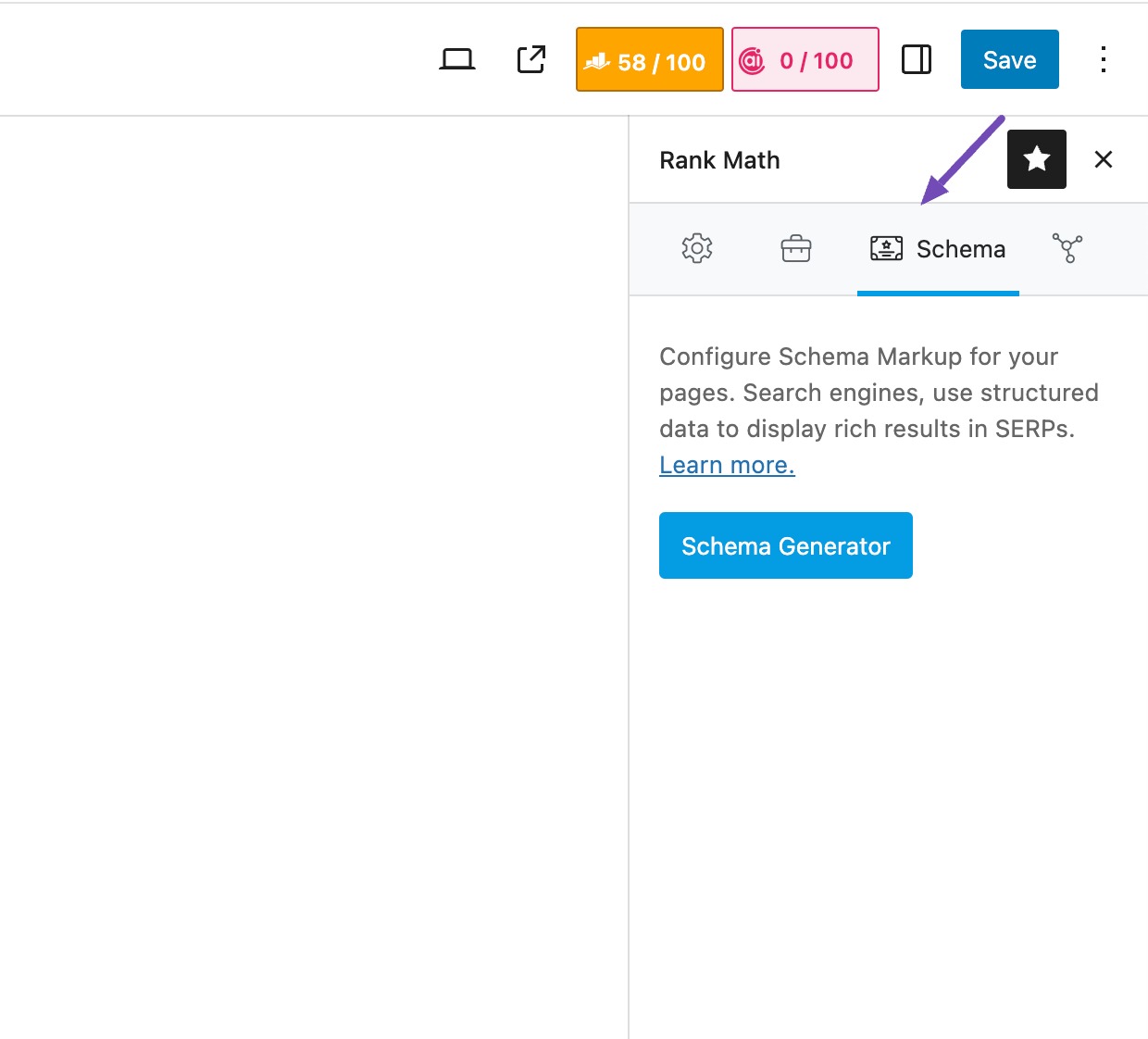
Click on Schema Generator. Then, choose the Schema types that you want to add to your post & fill out any of the fields Rank Math’s Schema Generator prompts you to complete.
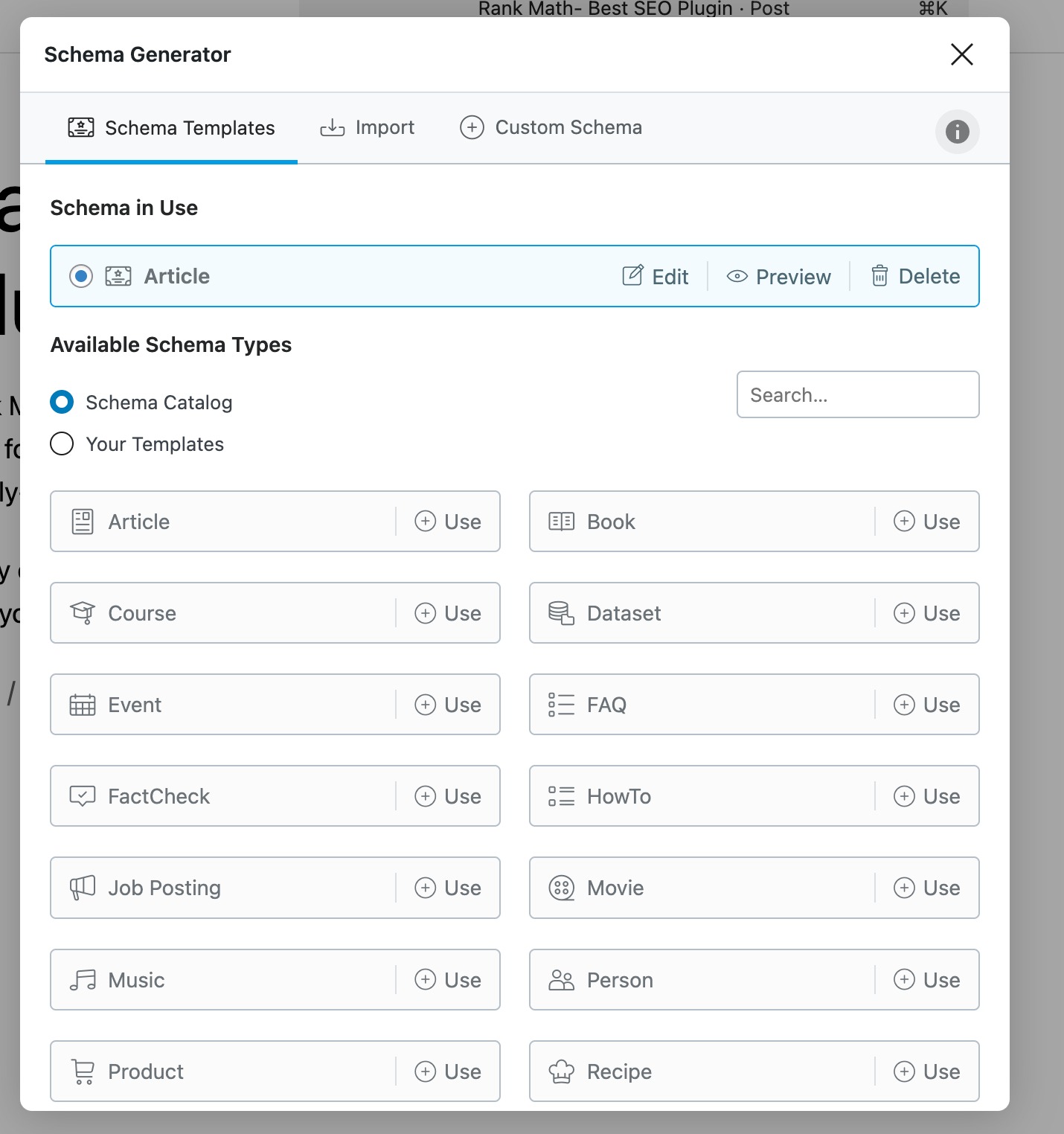
Use Google’s Rich Results test to ensure your structured data is implemented correctly.
Refer to our dedicated tutorial on Schema Markup to help search engines understand your content.
18 Update Old Pages
Don’t let outdated content hold back your website’s performance. While publishing new posts is important, updating older pages can have a big impact on your SEO, user engagement, and overall site authority.

As industries evolve and information changes, previously published content can become stale or less useful to readers. Regularly refreshing your existing pages ensures they stay accurate, relevant, and aligned with current search intent.
For example, if you run a tech blog, updating an older post about smartphone models by adding the latest releases, specs, and comparisons keeps the content fresh and valuable to your audience.
Updating content can also signal to Google that your site is actively maintained, which can lead to higher rankings.
19 Remove Zombie Pages
Zombie pages refer to web pages that have become obsolete, irrelevant, or redundant over time, do not bring any traffic, yet still exist on your website.
You can find these pages from your Google Analytics account.
Navigate to Reports → Life cycle → Engagement → Pages and screens from your Google Analytics account. Then, look for pages with low or no traffic, engagement, or conversions.
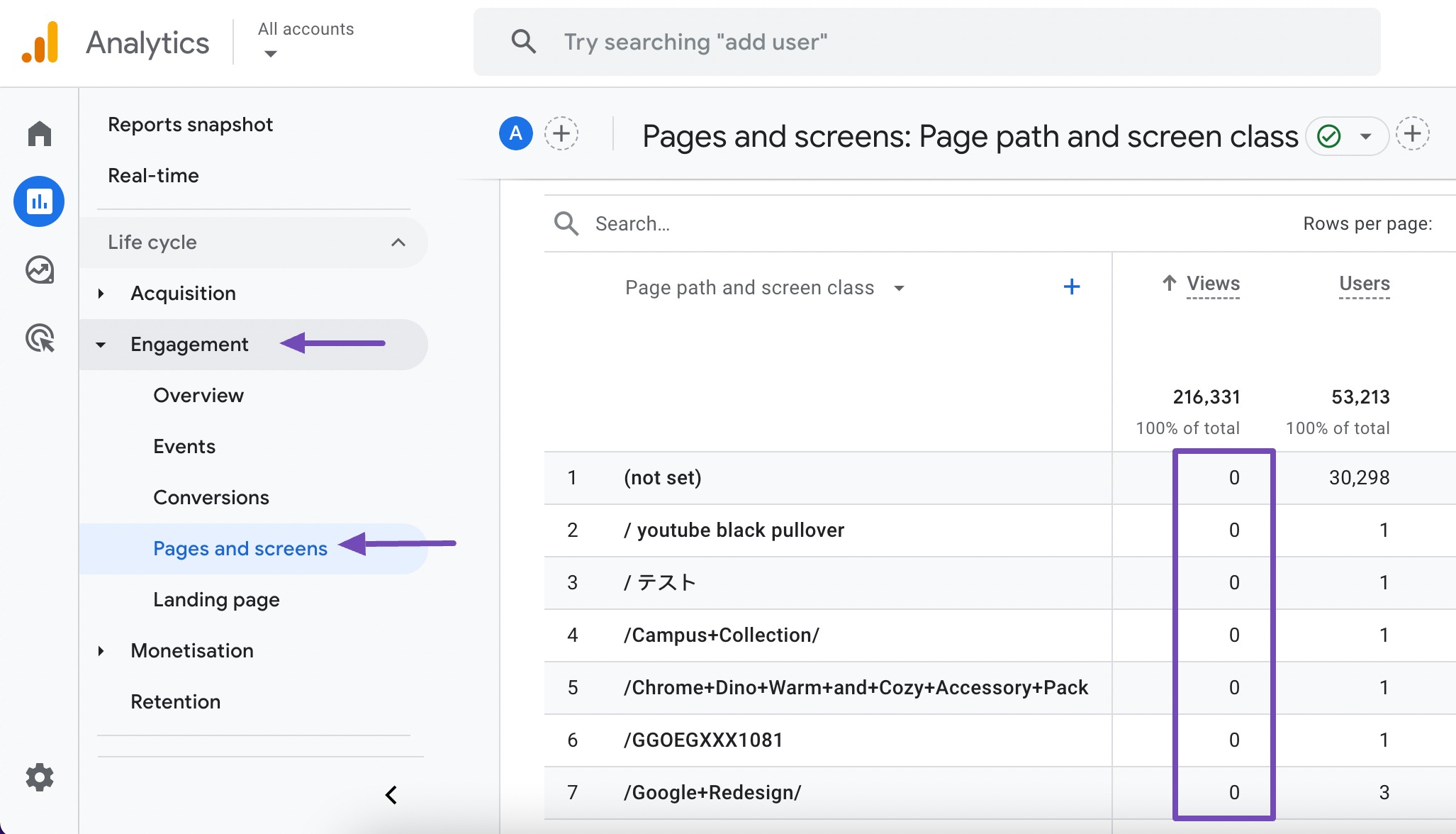
Once you locate the zombie pages, you can completely remove them from your site to streamline your website’s navigation, reduce clutter, and improve the overall user experience.
20 Get Backlinks From High-Authority Sites
Backlinks from high-authority websites are one of the most valuable assets in SEO. When well-established, trusted websites in your industry link to your content, it signals to search engines that your site is credible and authoritative. This can lead to improved rankings, greater visibility, and a significant boost in organic traffic.
Beyond SEO, backlinks can also drive referral traffic from audiences who are genuinely interested in your content, because they’re coming from sources they already trust.
But how do you identify and include authoritative external links in your content?
With Rank Math’s Content AI, you can easily discover and insert relevant, high-authority links based on your focus keyword.
Start by navigating your blog post in WordPress and scrolling to the Rank Math meta box.
Click the Content AI button to launch the interface.
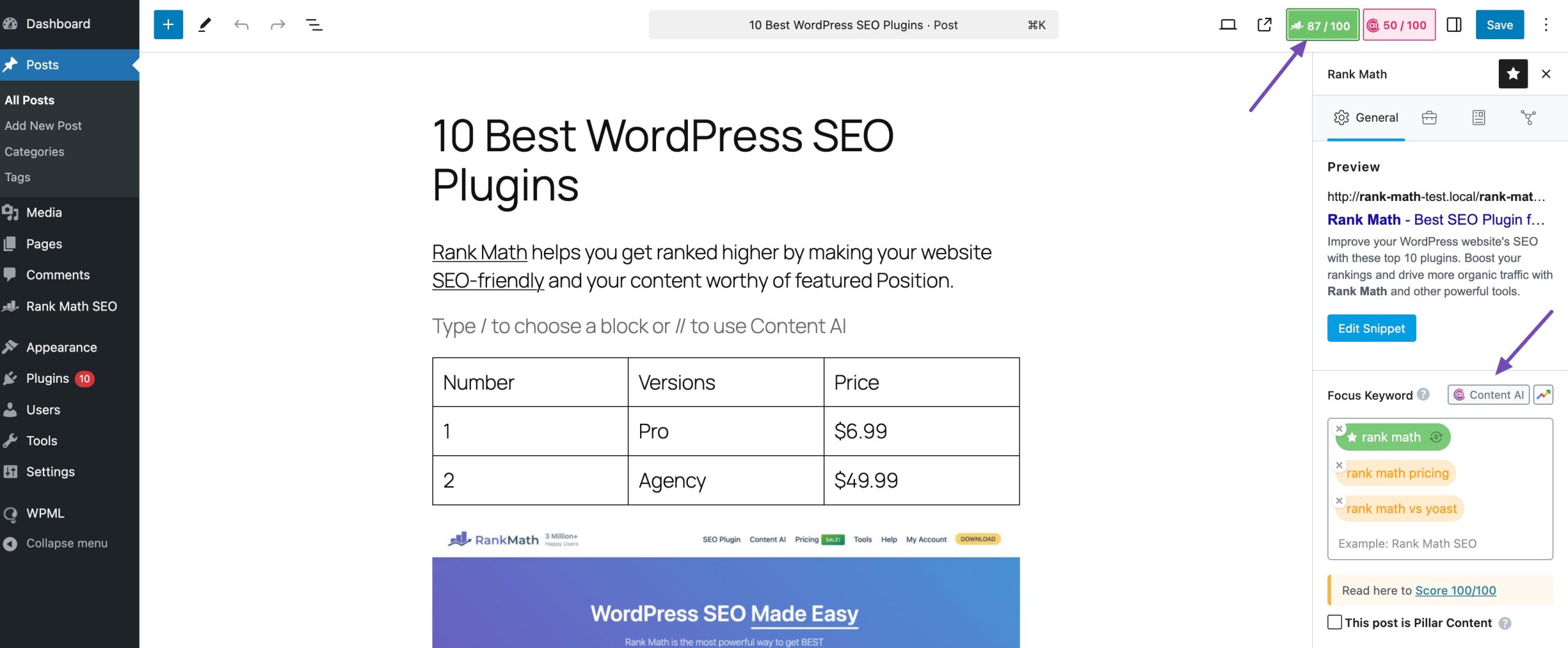
Once it opens, enter your focus keyword, and the tool will analyze it to generate a range of SEO recommendations.

Scroll down to the section labeled Link Suggestions, where you’ll find a curated list of high-authority external links relevant to your keyword.
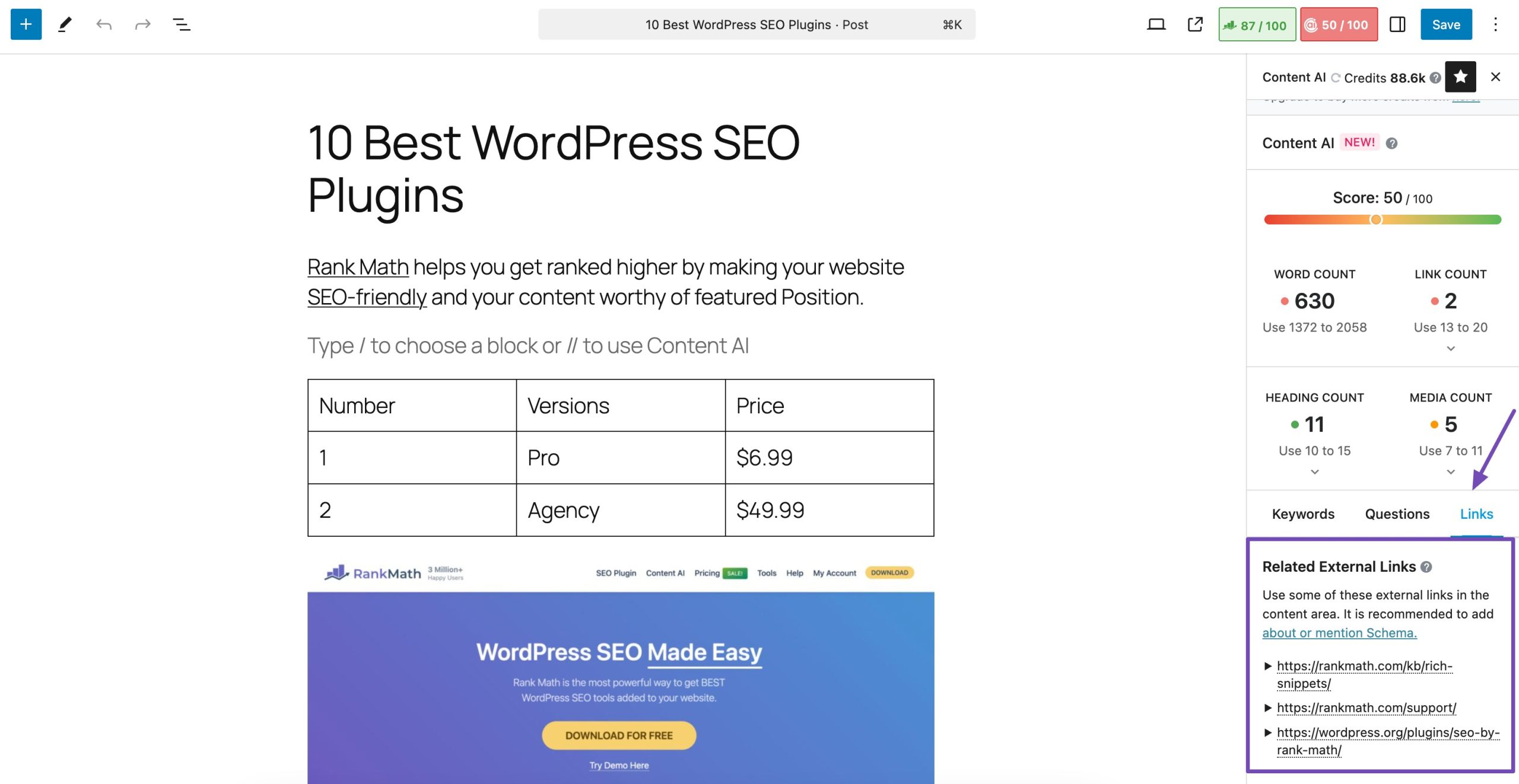
These suggestions are based on what top-ranking content includes, helping you strengthen your post with credible, SEO-friendly references. Simply review the list and choose the links that best fit your content naturally.
Refer to our dedicated tutorial on link-building and start building links!
21 Submit an XML Sitemap
An XML sitemap is a file that lists all the important pages of your site, allowing search engines to discover and index content more easily.
Submitting your sitemap to search engines like Google ensures that all your valuable content is indexed and can appear in search results.

Rank Math simplifies the process of creating and submitting an XML sitemap. You can automatically generate a sitemap for your WordPress site without any manual effort.
Once Rank Math generates the sitemap, it automatically submits it to search engines, saving you time.
22 Fix Broken Links
Fixing broken links is an important aspect of maintaining a healthy website and improving SEO.
Broken links, also known as dead links, occur when a hyperlink leads to a page that no longer exists or cannot be found.
These links can negatively impact user experience by frustrating visitors and harm your rankings, as search engines view them as a sign of poor site maintenance.
To fix broken links, regularly audit your website using tools like Google Search Console or Ahrefs to identify and locate them. Once identified, you can either update the broken link with the correct URL, redirect it to a relevant page, or remove it entirely.
Refer to our dedicated tutorial on broken links to identify and resolve broken links on your site.
23 Speed Up Your Website
Website speed refers to how quickly your web pages load and display content to visitors. Slow-loading websites can lead to higher bounce rates, decreased user engagement, and lost opportunities for conversions.
By optimizing your website’s speed, you can improve its chances of ranking well in search engine results pages (SERPs) and attract more organic traffic.
We’ve listed SEO tips to speed up your website:
- Optimize images: Compress and resize images.
- Minimize HTTP requests: Combine and minimize CSS and JavaScript files.
- Enable browser caching: Store static files locally to reduce downloads.
- Optimize code and scripts: Remove unnecessary elements and whitespace.
- Use Content Delivery Networks (CDNs): Distribute content across servers.
- Implement lazy loading: Defer loading of non-essential content.
- Optimize server performance: Choose reliable hosting and consider server upgrades.
Refer to our dedicated tutorial on speed optimization to speed up your site with practical tips.
24 Monitor and Improve Core Web Vitals
Monitoring and improving Core Web Vitals is a powerful SEO tip that directly impacts both user experience and your search engine rankings.
Core Web Vitals focus on three key metrics:
- Largest Contentful Paint (LCP) – How quickly the main content loads (aim for under 2.5 seconds).
- First Input Delay (FID) or its newer replacement, Interaction to Next Paint (INP) – How quickly the page responds to user interaction (ideal is under 100 ms for FID or 200 ms for INP).
- Cumulative Layout Shift (CLS) – How visually stable your page is while loading (aim for less than 0.1).
These metrics matter because Google uses them to evaluate the smoothness of your page experience. Pages that load slowly, shift unexpectedly, or respond sluggishly are frustrating for users, and Google wants to rank user-friendly pages higher.
To monitor Core Web Vitals, you can use tools like PageSpeed Insights.
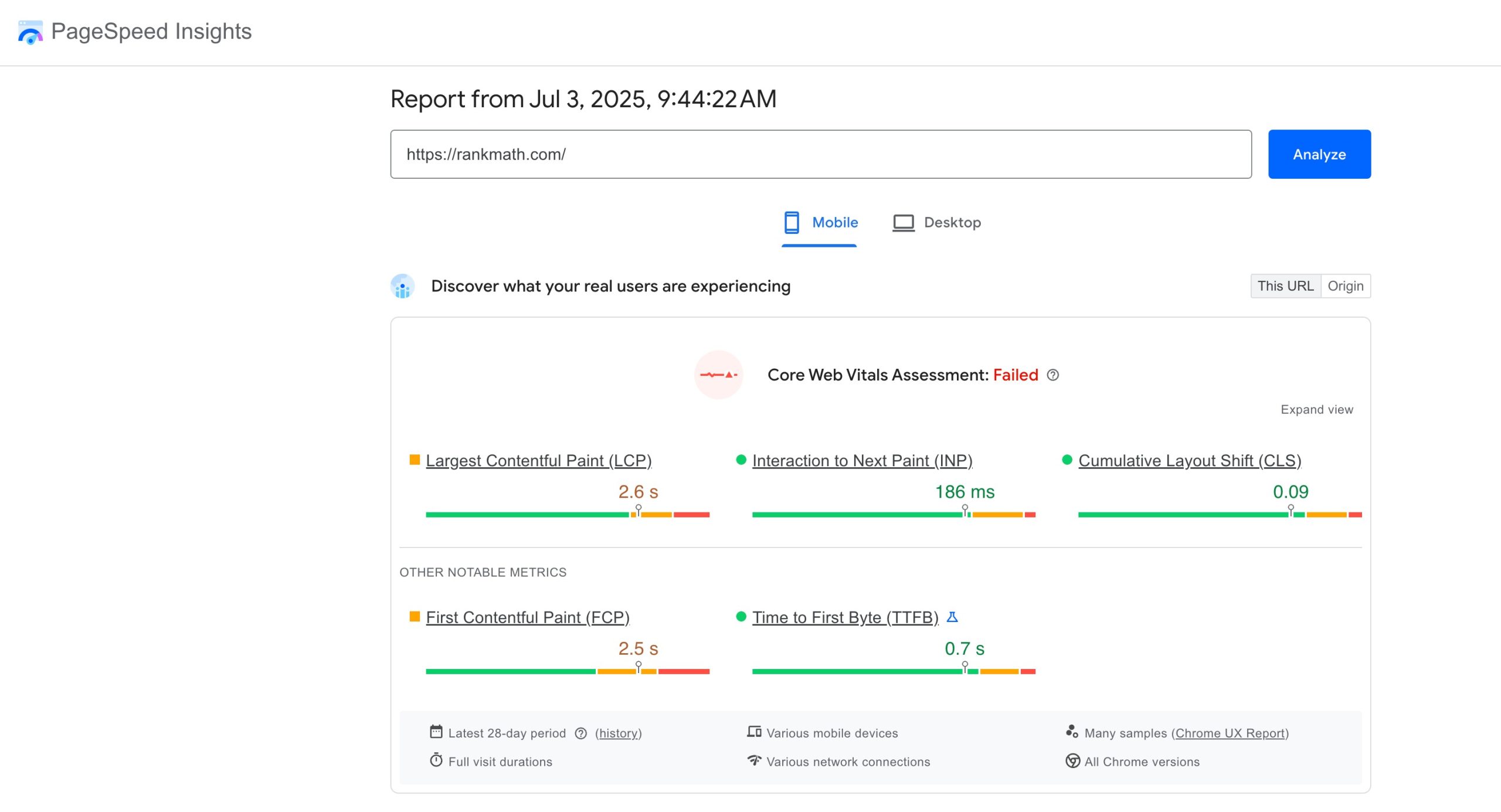
Improving these metrics often involves technical adjustments.
- To boost LCP, compress large images, use formats like WebP, lazy load media, and reduce render-blocking resources.
- To reduce INP, minimize JavaScript, remove unused code, and defer non-critical scripts.
- For a better CLS score, set size attributes for images and videos, preload fonts, and avoid injecting content above existing elements.
By optimizing your site for Core Web Vitals, you create a faster, more stable experience that encourages users to stay longer and engage more. And since Google rewards good user experience, it also gives you a better chance of ranking higher and driving more traffic to your site.
Refer to our dedicated tutorial on Core Web Vitals and optimize your site for better performance.
25 Improve Your CTR
Improving your Click-Through Rate (CTR) is essential for maximizing the effectiveness of your marketing efforts and increasing the number of audiences who click on your website’s links or ads.
A high CTR indicates that your content or ads perform well and drive engagement.
Create compelling title tags and meta descriptions; they should accurately reflect your content and use actionable language to entice users.
For instance, a title tag like “Unlock the Secrets to Effective Time Management | 10 Proven Tips” provides a clear benefit and encourages clicks.
Compelling call-to-action (CTA) buttons are also essential; use persuasive language to prompt your audience to take action, such as “Download Now” or “Get Started Today.”
Conclusion
Implementing the best SEO tips can significantly impact the success of your website in terms of visibility, traffic, and conversions.
From optimizing content with relevant keywords and high-quality images to improving website speed, each strategy plays an important role in enhancing your website’s search engine rankings and attracting organic traffic.
By focusing on providing valuable, informative content that meets the needs of your target audience and continuously refining your approach based on data and user feedback, you can establish your website as a trusted authority in your niche and achieve long-term success.
As we always say, SEO is an ongoing process and requires dedication, patience, and adaptation to evolving trends and algorithms.
By staying informed and proactive, you can stay ahead of the curve and drive meaningful results for your website and business.
If you like this post, let us know by Tweeting @rankmathseo.
